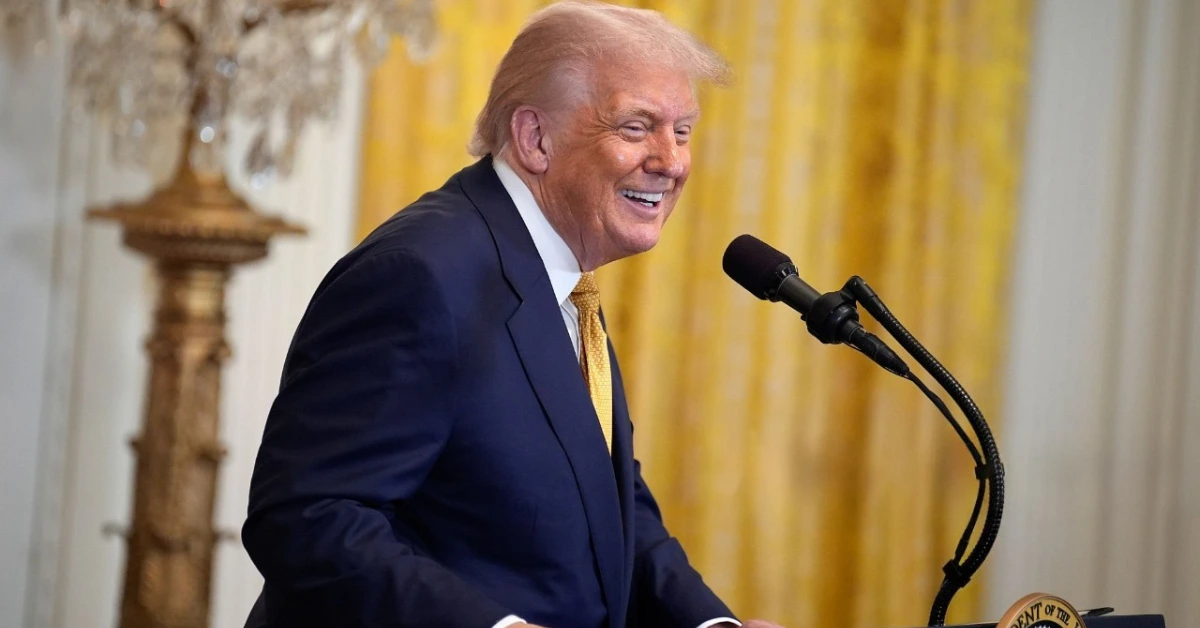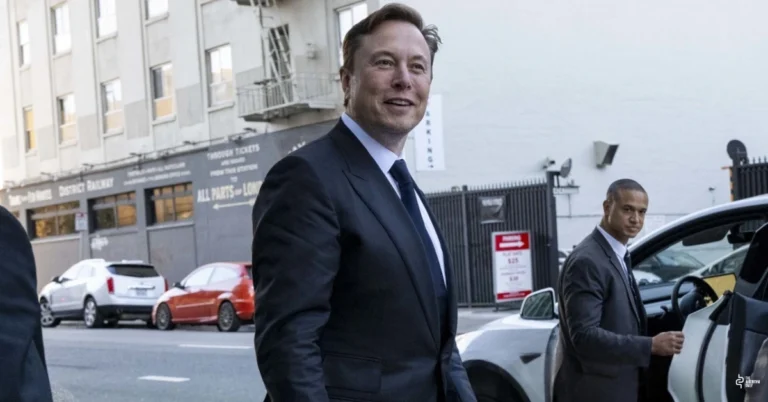The Trump administration has introduced a new plan to make the United States the clear world leader in artificial intelligence. This AI Action Plan is designed to boost innovation, build the needed infrastructure, and stay ahead of other countries, especially China. The government believes that artificial intelligence will bring about major changes in how the economy works, how the military operates, and how the country stays safe.
The Plan describes a future where AI helps scientists discover new things, improves the way the government works, strengthens the military, and creates new jobs. It encourages both the government and businesses to work quickly and with fewer rules to grow the AI sector. The document is more than a policy paper; it sends a strong message that the US must lead the AI revolution or fall behind.
The Plan begins with a sense of urgency. It compares today’s race for AI leadership to the space race of the past, saying that the country that leads in AI will shape the future and enjoy big economic and strategic benefits. One of President Trump’s first actions after returning to office was to cancel earlier AI rules made by the Biden administration, which were seen as slowing progress. Instead, the new rules are meant to support faster and stronger AI growth.
The Plan believes AI will bring big improvements in healthcare, energy, education, and manufacturing. These changes are described as a mix of industrial, information, and cultural progress. The government wants to expand access to computing power, build better infrastructure, and make sure AI reflects American values. Workers are at the heart of this plan, with promises of better training, more jobs, and higher living standards.
Removing Restrictions
The Plan strongly supports removing rules that could slow down the growth of artificial intelligence. It says the previous government made it harder for AI to grow by creating too many regulations. President Trump’s team believes that these rules get in the way of progress. As a result, government agencies have been told to look at current policies and get rid of any that make it harder to invest in or develop AI. Also, states that support AI growth with fewer restrictions will be more likely to receive federal funding.
This idea fits into a larger goal of giving businesses more freedom and keeping government control to a minimum. Even government bodies like the Federal Trade Commission will review their actions to make sure they are not unfairly blocking new AI companies. The Plan argues that cutting these rules is key to creating more jobs and helping the US stay ahead in the global AI race. The message is clear: America must move fast and not let unnecessary rules hold it back.
Moving Forward with AI
The Plan clearly says that the United States will not pause the development of artificial intelligence. It disagrees with the idea that AI should be put on hold for safety reasons. Instead, it argues that stopping progress would only help powerful companies and other countries catch up. The new plan supports moving forward while still taking steps to manage any risks.
The government believes that being too careful would only cause delays that the country cannot afford. It wants to keep building and testing AI openly, working closely with businesses to manage any dangers that come up. Rather than using strict rules that slow things down, the Plan focuses on having clear ways to check and guide AI as it develops. The goal is to keep moving quickly, but with enough oversight to stay safe and in control.
Making It Easier to Build Data Centres
To help AI grow quickly, the Plan calls for building more physical infrastructure like data centres, power systems, and chip-making factories. It points out that current environmental and land laws are too slow and make building take too long. The government plans to fix this by making it easier and faster to get permission to build, including using federal land for new data centres and power plants.
These changes are also important for national security. The administration wants all important AI systems to be built with American-made parts and not depend on countries like China. New rules will make sure that no critical technology comes from foreign rivals. The Plan makes it clear that building strong and secure infrastructure is not just about growing AI but also about protecting the country and staying ahead in the world.
Keeping AI Fair and Unbiased
One of the most debated parts of the Plan is its view on what it calls “biased AI.” The government says that some AI systems today are influenced by political beliefs and are being used to shape how people think. Because of this, it has ordered changes to the national AI guidelines, removing topics like diversity, misinformation, and climate change. The government also says it will only use AI tools that are based on what it sees as clear and truthful information.
The Plan also focuses on foreign AI systems, especially those from China. It says that these systems may include censorship or be used to spread propaganda. US agencies will check these models to make sure they are not being used to influence Americans. The goal is to keep US AI tools free from outside control and to protect free speech. The Plan sees this as both a local and global effort to control how information is created and shared.
Promoting Open Access to AI
The Plan strongly supports making AI tools open and available to everyone. It believes that open AI models are important because they let startups, researchers, and governments build their systems without depending on big tech companies. These open models also help people see how the technology works and allow scientists to test and improve them. This openness is seen as important for building trust in how AI is used.
To make this possible, the government plans to give better access to computing power by working with private companies and changing financial rules. The goal is to create a system where researchers and small businesses can use the same kind of computing tools as large companies. The government also wants American-made open models to become examples for the rest of the world, helping to spread US values in how AI is built and used.
AI Safety and Security
Even though the Plan supports fewer rules, it still takes safety seriously, especially in areas like defence, healthcare, and online security. It recognises that many AI systems are hard to understand and may not always behave as expected. To deal with this, the government will invest in research to make AI systems clearer, more reliable, and more stable, especially the large models used for language and image generation.
At the same time, the Plan addresses dangers such as fake videos and audio, corrupted data, and cyberattacks. The Department of Justice and other agencies will introduce new laws, tools to detect problems, and emergency plans to deal with these risks. The Plan also calls for building AI systems that are safe from the start and can quickly spot unusual behaviour. It shows that the government believes it is possible to move fast with AI while still keeping people and systems protected.
Stopping China from Gaining AI Power
The Plan sees China as America’s main competitor in artificial intelligence. To stop advanced technology from reaching Chinese companies, the United States will tighten its rules on the export of chips, software, and tools used to make AI systems. New steps will be taken to track where these technologies go and how they are used. The government believes this is necessary to keep America ahead in AI development.
Beyond trade limits, the Plan also focuses on reducing China’s influence in international AI discussions. It accuses Chinese companies of trying to push strict government control into global AI rules. The United States wants its allies to support systems that reflect American values instead. If needed, the government will use sanctions, extra taxes, and foreign policy tools to make sure other countries do not help China get around these restrictions.
National Security
The Plan sees artificial intelligence as very important for keeping the country safe. It calls for the fast use of AI in the military and intelligence services. This includes using AI to handle key defence tasks, building secure government data centres, and using AI to help analyse intelligence. At the same time, the government wants to make sure these systems are well protected against attacks from enemies.
The Plan also focuses on checking the risks that could come from both American and foreign AI systems. It encourages hiring more AI experts in government and setting up new ways to test systems, plan for different situations, and safely use AI in sensitive areas. Fake videos and images, known as deepfakes, are seen as a growing problem, so the government will create new legal tools to spot and stop them. Overall, the Plan makes clear that AI will play a big role in protecting the United States in the future.
What Does This Mean for Big Tech?
The AI Action Plan signals a major shift in how the federal government will engage with large technology companies. On one hand, the Plan removes many of the rules that big tech firms previously had to follow, giving them more freedom to build and scale AI products. This could speed up development and allow US companies to stay ahead in the global race. However, the Plan also warns against giving too much power to a few major players. It supports open-source models and greater competition, which could challenge the dominance of some of the biggest firms in the industry.
Additionally, tech companies working with the federal government will face new expectations. They must prove that their AI systems are free from political bias, align with American values, and are secure against foreign threats. Companies that meet these standards could benefit from government contracts and partnerships, while those that do not may be pushed out of federal deals. Overall, big tech stands to gain from a more business-friendly environment, but with stronger pressure to align with national goals.
What Does It Mean for AI Labs?
One of the most noticeable gaps in the AI Action Plan is its silence on copyright. While the Plan lays out sweeping goals for AI growth and open access, it does not address the ongoing conflict between AI developers and content creators over the use of copyrighted material in training datasets. This omission is particularly important for publishers, authors, musicians, and artists, many of whom are demanding stronger protections and compensation for the use of their work in large-scale AI systems. Without clear guidance, the Plan leaves open the possibility for AI companies to continue using publicly available data, including copyrighted content, without licenses or payment.
For AI companies and labs, this legal grey area offers short-term flexibility but long-term uncertainty. While open-weight models and public datasets are encouraged by the Plan, there is no requirement to respect copyright boundaries in their creation. This creates a risk of lawsuits and public backlash, especially as major publishers and rights groups step up efforts to defend their intellectual property. Companies operating in the AI space will benefit from looser regulation and expanded infrastructure access under the Plan, but without a national copyright strategy, they may be forced to navigate increasing legal challenges on their own. The lack of a federal stance on this issue could leave creators and developers locked in a growing battle over who owns the future of AI-generated content.
Anthropic’s Response to “Build AI in America”
Anthropic, the AI safety and research company behind Claude, has publicly weighed in on the “Build AI in America” policy. They released a statement on X, stating:
Here’s what it means:
- Support with caveats: Anthropic generally welcomes the focus on energy and infrastructure as essential for sustaining strong AI development in the US. Their message highlights how critical it is to power future data centres and AI training facilities safely.
- Continuing the conversation: Although Anthropic has not directly suggested changes in the tweet, their broader report emphasises that meaningful AI policy must balance infrastructure needs with safety standards. Their stance suggests that while growth is vital, thoughtful checks remain essential.
This response from Anthropic highlights the current debate in AI policy: pushing for rapid development and infrastructure expansion while recognising the importance of maintaining safety and security standards.
What Is OpenAI’s Policy and Are They Aligned?
OpenAI has taken a different path compared to the Trump administration’s AI Action Plan. The company’s policy approach centres on responsible scaling, transparency, and long-term safety. OpenAI has supported the idea of “frontier AI regulation,” where the most powerful models are subject to special oversight. In its official blog posts and testimony before Congress, OpenAI has repeatedly advocated for third-party auditing, disclosure standards, and international cooperation to manage advanced model risks (OpenAI blog, May 2023, Sam Altman’s Senate testimony, May 2023).
This puts OpenAI only partly in alignment with the Build AI in America vision. While both share the belief that the United States must lead in AI development, OpenAI has voiced concerns about unchecked acceleration. Unlike the Trump Plan, which focuses on cutting regulation and prioritising infrastructure, OpenAI continues to stress the need for clear safety rules and robust oversight. As a result, OpenAI is likely to support some parts of the policy, such as investment in domestic compute and workforce training, while remaining cautious about the absence of guardrails around frontier AI development. This difference reflects the broader divide in the AI policy debate between safety-first advocates and rapid-growth backers.
America’s AI Action Plan marks a bold and sweeping shift in how the United States plans to lead the global race in artificial intelligence. With a clear emphasis on speed, scale, and sovereignty, the Trump administration is pushing for fewer restrictions, faster infrastructure development, and greater national control over AI technologies. It is a plan rooted in economic ambition, technological confidence, and geopolitical urgency, positioning AI not just as a tool for progress but as a pillar of national power.
However, this approach is not without its tensions. While the Plan promises innovation and jobs, it leaves unresolved questions about safety, copyright, and the long-term role of big tech in shaping society. Leading AI labs like Anthropic and OpenAI have signalled caution, reminding policymakers that leadership also requires responsibility. As the U.S. barrels ahead, the world will be watching because the future of AI will not just be built in America, but also judged by how wisely it is governed.
📲 Get the latest Tech & Startup News on our WhatsApp Channel
👉 Join Now



